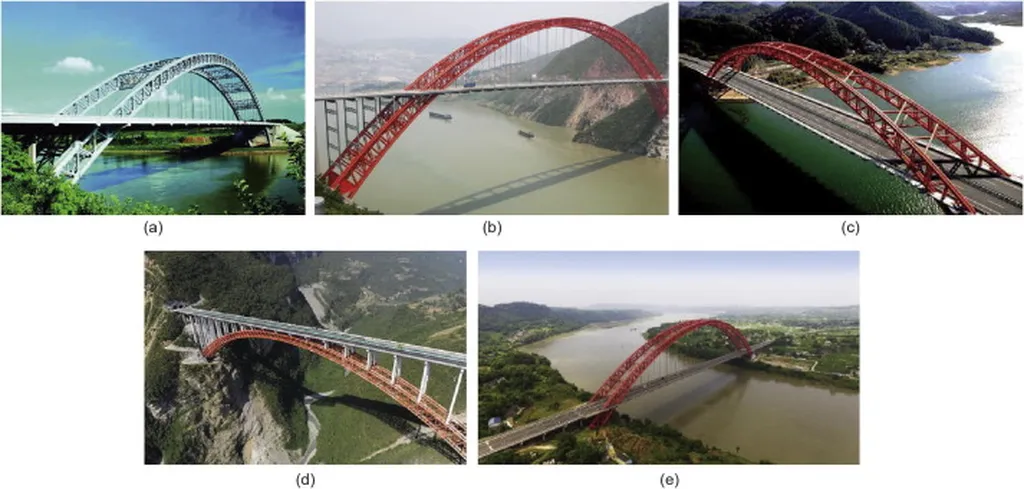In the world of bridge construction, innovation often comes down to the nuts and bolts of stress management. A recent study published in the journal *Case Studies in Construction Materials* (translated from Chinese) offers a novel approach to a common challenge in building continuous concrete-filled steel tube (CFST) tied-arch bridges. The research, led by Zengwu Liu from the School of Transportation and Civil Engineering at Shandong Jiaotong University, presents a method to optimize concrete pouring sequences and tensioning of tie rods, ensuring structural safety and efficiency.
The problem at hand is a familiar one for engineers: during the concrete grouting process in CFST bridges, improper sequencing can lead to excessive tensile stress in bridge piers and repeated tensioning of tie rods. This not only compromises structural safety but also slows down construction. Traditional methods rely heavily on finite element analysis, which, while thorough, can be time-consuming and may not always yield the optimal solution.
Liu’s research introduces a more streamlined approach. By analyzing stress influence lines, the team developed a calculation method to determine the feasible region of tie rod tension force, the optimal tensioning time, and the most effective concrete pouring sequence. “Our method significantly reduces the need for blind trial computations,” Liu explains. “It ensures that no tensile stress appears in the bridge piers during construction, enhancing both safety and efficiency.”
The implications for the construction industry are substantial. For one, the method can accelerate project timelines by minimizing the need for extensive trial-and-error calculations. This efficiency can translate into cost savings and faster project completion, which are always welcome in the energy sector, where infrastructure projects often face tight deadlines and budget constraints.
Moreover, the research highlights the importance of structural monitoring. By verifying their calculations with engineering monitoring data, Liu’s team demonstrated the reliability of their method. This emphasis on real-world validation is crucial for gaining industry trust and adoption.
Looking ahead, this research could shape future developments in bridge construction. As Liu notes, “Understanding how structural parameters affect the force acting on bridge piers is key to optimizing design and construction processes.” This insight could lead to more innovative designs and construction techniques, pushing the boundaries of what’s possible in civil engineering.
In an era where infrastructure projects are becoming increasingly complex, methods that enhance safety, efficiency, and cost-effectiveness are invaluable. Liu’s research offers a promising step forward, providing a practical tool for engineers to navigate the challenges of modern bridge construction. As the industry continues to evolve, such innovations will be crucial in meeting the demands of a rapidly changing world.

